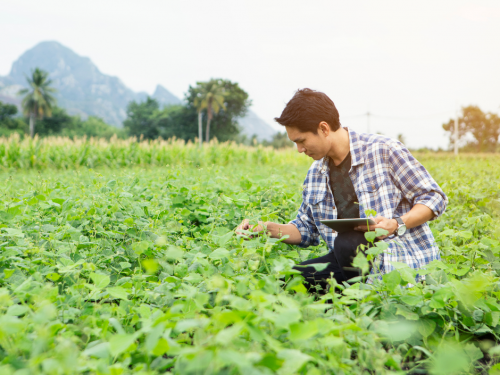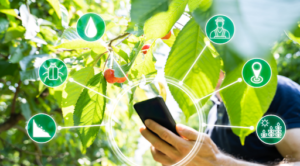
IoT farming makes the agricultural industry productive, efficient and sustainable due to the rise in the usage of the technology. This is especially the case given that as the population of the world increases and the demand for food also increases, farmers are going for the best practices. It will be useful here to provide a definition of the reason for the usage of exaggeration in the context of the Internet of Things farming technology and the effects it has on modern farming practices.
Improving Crop Management
The IoT farming technology is most useful in controlling the management of crops since it will enhance the practices in the farming sector. Through the use of IoT devices, farmers can be able to get detailed information on the health and general conditions of their crops. Through this, the use of fertilizers and pesticides can be limited to the quantities needed by the crops to avoid harm to the land. Farmers are able to observe crop conditions closely, and thus be able to identify early signs like disease or pest incidence, which requires immediate intervention.
Enhancing Efficiency with IoT
An important reason for the popularity of IoT farming technology is that it helps to optimize the process in farms. As a result, it becomes possible to employ IoT sensors to track numerous factors connected with farming without interrupting day-to-day operations. Such as placing sensors in the soil to determine the quantity of moisture and it helps the farmers to water the plants only when it is necessary, helping in saving water and other resources. In the same way, weather stations that incorporate IoT sensors ensure that farmers are provided with accurate climate information to use when farming.
Enhancing Livestock Management
Today, IoT is not only applied to crop farming Only Livestock farming is also a part of IoT. Wireless IoT sensors can be put on animals to track health and behavior indicating diseases and distress. These sensors involve vital sign monitoring, early disease detection, and feeding habits tracking. For instance, if a cow starts showing symptoms of disease, the farmer can easily remove the animal from the rest of the cows and give it the necessary treatment. This ensures improved quality of livestock and hence increased productivity.
Reducing Environmental Impact
Another critical benefit that is observed in IoT farming technology is the ability it has towards minimizing the effects of farming on the environment. That way IoT being a web of interconnected objects offers normal details about crops and livestock and then enables farmers to use resources in a more efficient manner. It implies that there will be minimal water usage resulting in wastage and few incidences of chemical utilities hence curtailing greenhouse gas emissions. IoT leads to precision farming technologies which result in smart use of inputs hence translating to sustainable farming.

Increasing Productivity and Profitability
Thus, IoT in the farming sector makes it possible for farmers to boost production and get the most out of their endeavors. This implies that matters such as irrigation, application of fertilizers, or pest control are efficiently done through automation thus reducing time and list of workers needed. Also, when farmers frequently analyze their results and use the findings to their advantage, they can produce better-quality crops and higher yields. Internally, IoT in conjunction with predictive analytics can predict crop yields, market requirements, and even the ideal time to plant the crops to minimize losses and risks.
Addressing Global Food Demand
As the global population is projected to reach 8 billion or more, middle and high-income countries where the burden of Chronic Non-Communicable Diseases is ever on the rise shall continue facing immense pressure. According to these statistics, food demand is set to rise to $5 billion by 2030, thereby rising by 50%. That is why IoT farming technology provides a realistic outlook for addressing this demand. By driving the efficiency and productivity of farming, IoT makes it possible to meet the global population’s demand for food. The use of technology to monitor and control agricultural practices also ensures that farming is possible under various circumstances.
Kheti Buddy: Your Farming Partner
At Kheti Buddy, customers are aware of the potential that IoT farming technology has shown to possess. The goal is to utilise technology to make a positive difference in society. Farming’s biggest issues are indeed global, and this is why our approach is to offer simple and practical solutions. As highlighted above, Kheti Buddy is aimed at being a companion to farmers and home growers throughout the farming process. Our technology is used in the process of gathering data, assessing it, offering recommendations, and promoting better farming practices aimed at increasing the world’s food supply through our range of offerings.
Conclusion
IoT farming technology has gained a significant reception given its several advantages, including increasing production, performance, sustainability, and food security and quality. With the help of IoT solutions, new opportunities for sustainable farming are opened to farmers, which are profitable. In the coming years, IoT will definitely be a significant part of agriculture as it continues to determine how the world’s population is going to be fed as well as tackle more of the new trends in farming.







